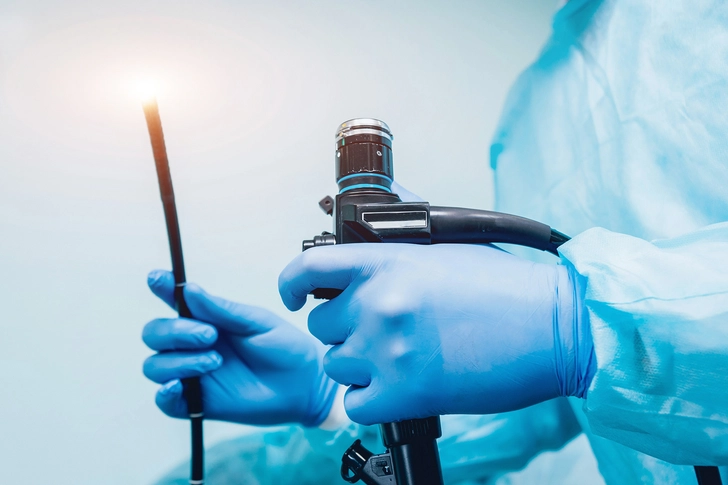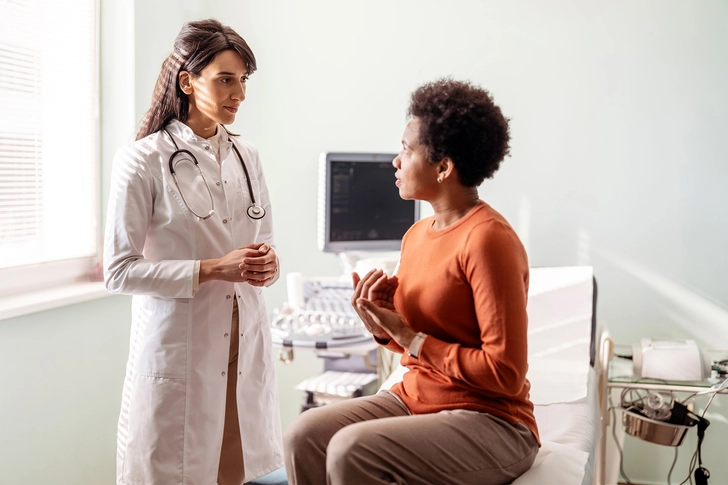- Overview
- Symptoms
- Causes & Risks
- Tests & Diagnosis
- Treatment
- Living With
- Complications
- Support & Resources
- Appointment Prep
- View Full Guide
11 Conditions That Look Like Crohn’s Disease: Ulcerative Colitis, Celiac Disease, Appendicitis, and More



Conditions That Look Like Crohn’s
Diarrhea, stomach pain, and fatigue can all point to Crohn’s disease. But sometimes, these symptoms may signal another condition like ulcerative colitis, irritable bowel syndrome (IBS), or celiac disease. Conditions that look like Crohn’s disease should always get checked out to pinpoint the exact cause. Getting the right diagnosis is the first step toward effective treatment and feeling better.

Ulcerative Colitis
Ulcerative colitis (UC) and Crohn’s are both inflammatory bowel diseases that share symptoms like abdominal pain, diarrhea, and bloody stool. UC causes inflammation only in the colon, while Crohn’s can affect any part of the gastrointestinal tract. The two conditions are usually distinguished through a colonoscopy. In UC, inflammation affects continuous areas of the colon, while Crohn’s disease shows patchy inflammation separated by areas of healthy tissue.

Irritable Bowel Syndrome
While diarrhea can occur with both conditions, people with irritable bowel syndrome (IBS) usually feel relief from abdominal pain after having a bowel movement. Unlike Crohn’s disease, IBS doesn’t cause blood in the stool, fever, or weight loss. There isn’t a single test that confirms an IBS diagnosis because it’s considered a diagnosis of exclusion. Your doctor may still order a colonoscopy to rule out more serious conditions such as Crohn’s disease.

Celiac Disease
Both celiac disease and Crohn’s disease can cause abdominal pain and diarrhea. Doctors can often rule out Crohn’s by doing bloodwork to check for specific inflammatory markers. However, the two conditions can overlap, and having one increases your risk of developing the other. Because of this connection, your doctor will need to monitor you closely for signs of both.

Gastroenteritis
Gastroenteritis happens when a virus, such as norovirus, or bacteria like E. coli or salmonella infect your stomach and intestines. You can get it after eating contaminated food, like spoiled potato salad, or from a common stomach bug. While gastroenteritis can cause symptoms similar to Crohn’s disease, such as abdominal pain and diarrhea, they appear suddenly and usually go away within a few days.

Diverticulitis
Diverticulitis is inflammation of the diverticula, small pouches that bulge out through the wall of your lower colon. Like Crohn’s, it can cause intense abdominal pain, diarrhea, fever, nausea, and vomiting. But diverticulitis comes on suddenly and is on the lower left side of your abdomen. Doctors diagnose diverticulitis through blood tests and imaging tests like CT scans. Once it’s treated, it goes away, while Crohn’s is lifelong.

Microscopic Colitis
Microscopic colitis, like Crohn’s, develops when inflammation affects the colon. Its main symptom is watery diarrhea. But unlike Crohn’s, it doesn’t appear on a colonoscopy unless the doctor takes a biopsy and examines the tissue under a microscope. Most people respond well to treatment, which often includes medications to control diarrhea and, in some cases, steroids.

Ischemic Colitis
Ischemic colitis happens when reduced blood flow triggers inflammation in the colon. It’s often described as the colon’s version of a heart attack. While it can cause symptoms similar to Crohn’s disease, it develops for entirely different reasons and mainly affects older adults. Doctors diagnose both conditions through colonoscopy. In most cases, ischemic colitis improves with antibiotics and a liquid-only diet, and it usually doesn’t come back.

Appendicitis
Appendicitis pain usually appears suddenly, on the right side of the abdomen. If you develop this, doctors will do an imaging test. If you have appendicitis, your appendix will be inflamed, while people with Crohn’s have an inflamed bowel. Treatment is emergency surgery. Once your appendix is removed, your symptoms resolve.

Small Intestinal Bacterial Overgrowth
Small intestinal bacterial overgrowth (SIBO) happens when too much harmful bacteria grows in the intestines. Like Crohn’s, it causes symptoms like abdominal pain and diarrhea. Your doctor may want to do a colonoscopy to rule out Crohn’s. If they suspect SIBO, they may suggest a breath test to measure levels of gas-producing bacteria in your gut. Treatment is usually antibiotics. Because SIBO remains a complex condition, doctors tailor management based on each person’s symptoms and test results.

GI-Involving Endometriosis
GI-involving endometriosis develops when endometrial tissue attaches to the wall of the colon, leading to symptoms such as painful bowel movements, bloating, and diarrhea. Symptoms that worsen around your period often signal this condition. When a doctor suspects GI-involving endometriosis, they typically refer you to a gynecologist who specializes in diagnosing and treating it.

Colon or Small Bowel Cancer
Colon and small bowel cancers can cause symptoms similar to Crohn’s disease, such as bloody bowel movements, diarrhea, abdominal pain, nausea, vomiting, and weight loss. Anyone who has these symptoms should have a colonoscopy to find the cause. The rate of colon cancer rises fastest among people in their 20s and 30s, so it is important not to overlook these warning signs.

When to See a Doctor
See your doctor if you notice blood in your bowel movements or if changes in your bowel habits last more than two weeks. It’s always better to be cautious and get checked rather than wait and risk missing a serious condition such as Crohn’s disease or colon cancer.
IMAGES PROVIDED BY:
- iStock/Getty Images
- Science Photo Library/Getty Images
- SCIEPRO / Getty Images
- E+/Getty Images
- Getty Images
- Sebastian Kaulitzki/Science Source
- iStock/Getty Images
- Science Photo Library/Getty Images
- Eric Olson/WebMD
- iStock/Getty Images
- Shutterstock
- iStock/Getty Images
- E+/Getty Images
SOURCES:
Harry Teicher, MD, gastroenterologist, Swedish Medical Center, Seattle, WA.
Crohn’s & Colitis Foundation: "IBD Mimics: Most Common Conditions Misdiagnosed as IBD," "What are the early indicators of Crohn’s disease and ulcerative colitis, and how are these two diseases different from each other?," 'IBS vs IBD," "What is Microscopic Colitis?"
Celiac Disease Foundation: "Crohn’s Disease."
Cleveland Clinic: "Gastroenteritis: What It Is, Symptoms, Causes & Treatment," "Ischemic Colitis: Symptoms & Treatment," "SIBO: Symptoms, Diagnosis, Causes & Treatment," "Understanding the Endometriosis-Digestive Link."
National Institute of Health: "Definition & Facts for Diverticular Disease," "Symptoms & Causes of Appendicitis."
Cancer Research Institute: "Colorectal Cancer Rates Are Skyrocketing in Young Adults—Is Your Lifestyle Putting You at Risk?"